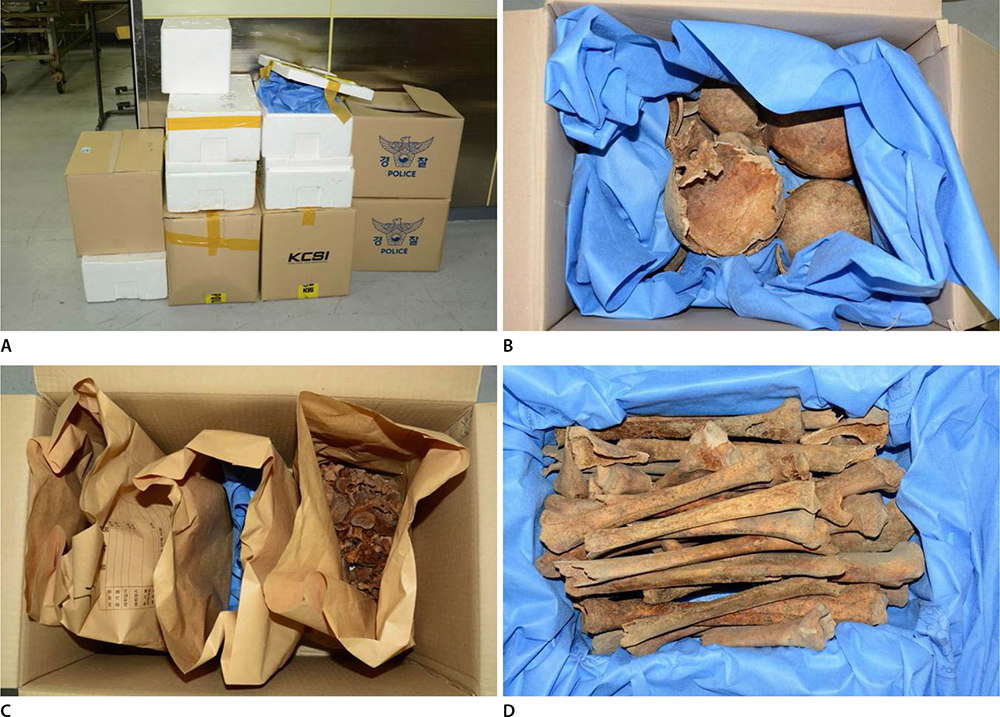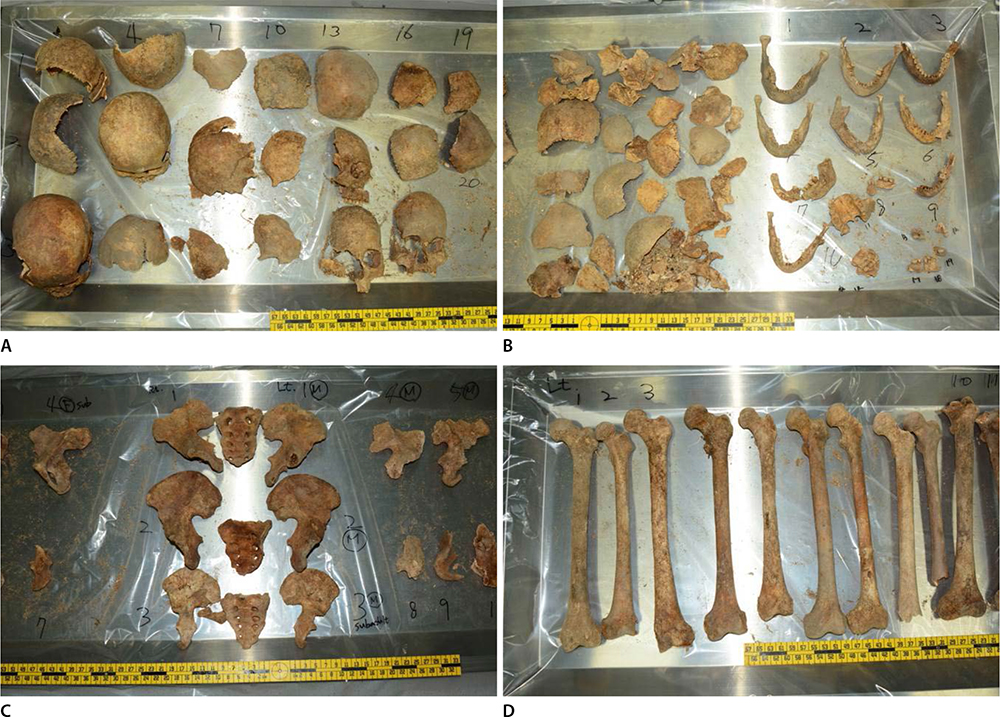Korean J Leg Med.
2018 Aug;42(3):105-109. 10.7580/kjlm.2018.42.3.105.
Radiocarbon Dating of Skeletal Remains: Case Report
- Affiliations
-
- 1Division of Forensic Investigation, National Forensic Service Seoul Institute, Seoul, Korea. parkandjp@gmail.com
- 2Medical Examiner's Office, National Forensic Service, Wonju, Korea.
- 3Department of Anatomy, Catholic Institute for Applied Anatomy, College of Medicine, The Catholic University of Korea, Seoul, Korea.
- KMID: 2419462
- DOI: http://doi.org/10.7580/kjlm.2018.42.3.105
Abstract
- While radioactive isotope analysis has proved to be a useful method in disciplines such as archaeology and forensic anthropology, more recently, radiocarbon dating has allowed for a more nuanced biological profile of human skeletal remains. Radiocarbon dating has been made possible by the above ground nuclear bomb test conducted in 1963, which raised the level of atmospheric radiocarbon concentration to almost twice the natural level. Because the annually measured tropospheric ¹â´C concentrations are integrated into the bomb peak curve, the time of birth and death of an individual can be estimated by comparing the radiocarbon content of a skeletal sample to the bomb-curve value. In July 2017, about 1,000 skeletal remains were excavated at the construction site of Sokcho. For medico-legal purposes, we conducted anthropological and odontological examinations of all the human remains. We then conducted the radiocarbon analysis on seven femora (head and body portions), five mandibular teeth, and soil from the site through a request to the Korea Institute of Geoscience and Mineral Resources. The results demonstrated that the estimated year of birth or death was prior to the 1950s. Due to the diverse distribution of results, we deduced that the human remains were from the local mass grave. This study supports and suggests the use of radiocarbon dating more frequently in the analysis of human skeletal remains.
Keyword
MeSH Terms
Figure
Reference
-
1. Stuiver M, Polach HA. Discussion: reporting of 14C data. Radiocarbon. 1977; 19:355–363.2. Reimer PJ, Brown TA, Reimer RW. Discussion: reporting and calibration of post-bomb 14C data. Radiocarbon. 2004; 46:1299–1304.
Article3. Hua Q, Barbetti M, Rakowski AZ. Atmospheric radiocarbon for the period 1950–2010. Radiocarbon. 2013; 55:2059–2072.
Article4. Taylor RE, Suchey JM, Payen LA, et al. The use of radiocarbon (14C) to identify human skeletal materials of forensic science interest. J Forensic Sci. 1989; 34:1196–1205.5. Ubelaker DH, Buchholz BA, Stewart JE. Analysis of artificial radiocarbon in different skeletal and dental tissue types to evaluate date of death. J Forensic Sci. 2006; 51:484–488.
Article6. Ubelaker DH, Parra RC. Radiocarbon analysis of dental enamel and bone to evaluate date of birth and death: perspective from the southern hemisphere. Forensic Sci Int. 2011; 208:103–107.
Article7. Ubelaker DH. Radiocarbon analysis of human remains: a review of forensic applications. J Forensic Sci. 2014; 59:1466–1472.
Article8. Cook GT, MacKenzie AB. Radioactive isotope analyses of skeletal materials in forensic science: a review of uses and potential uses. Int J Legal Med. 2014; 128:685–698.
Article9. Hong W, Park JH, Kim KJ, et al. Establishment of chemical preparation methods and development of an automated reduction system for AMS sample preparation at KIGAM. Radiocarbon. 2010; 52:1277–1287.
Article
- Full Text Links
- Actions
-
Cited
- CITED
-
- Close
- Share
- Similar articles
-
- Birth Year Estimation of Skeletal Remains by Radiocarbon Dating for Teeth
- Death Year Estimation of Skeletal Remains by Radiocarbon Dating of Femur
- Letter to the Editor Regarding the Article “Birth Year Estimation of Skeletal Remains by Radiocarbon Dating for Teeth”
- Predictive Factors for Perpetrations of Dating Violence in University Students
- Anthropological Study on Human Skeletons from Joseon Tomb, for Confirming Ryu Ja-Gwang, a Famous Historical Figure of Medieval Korea



